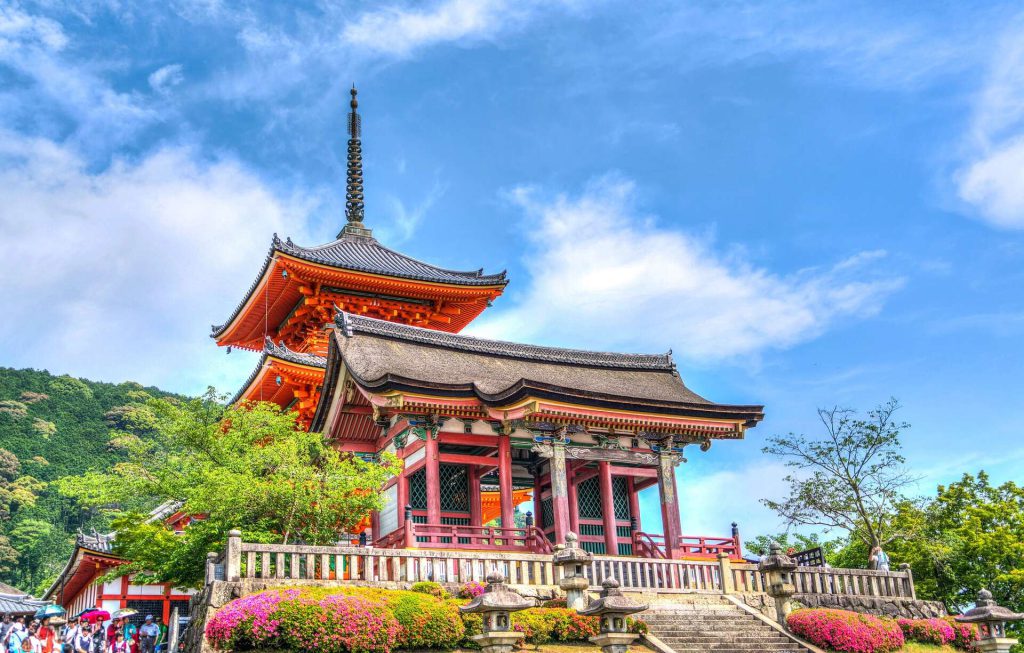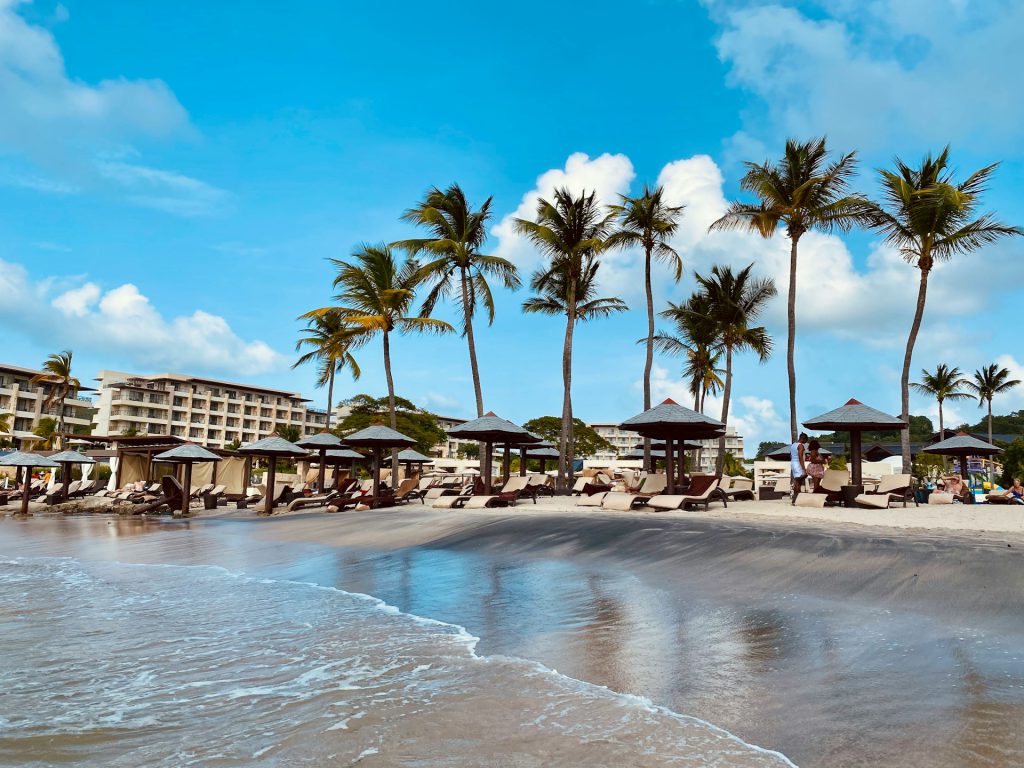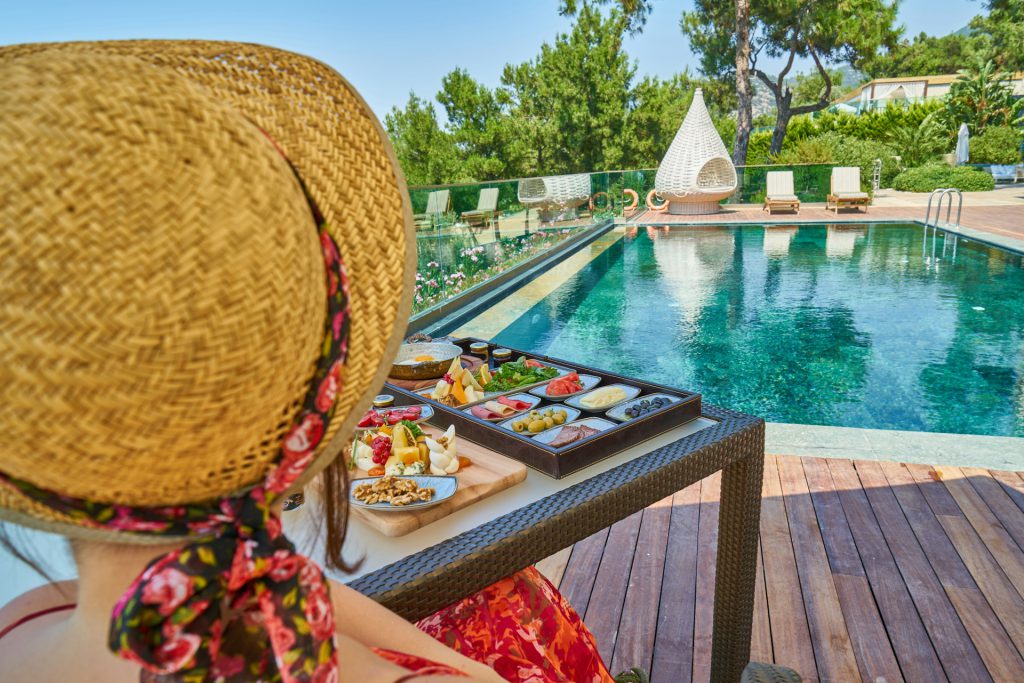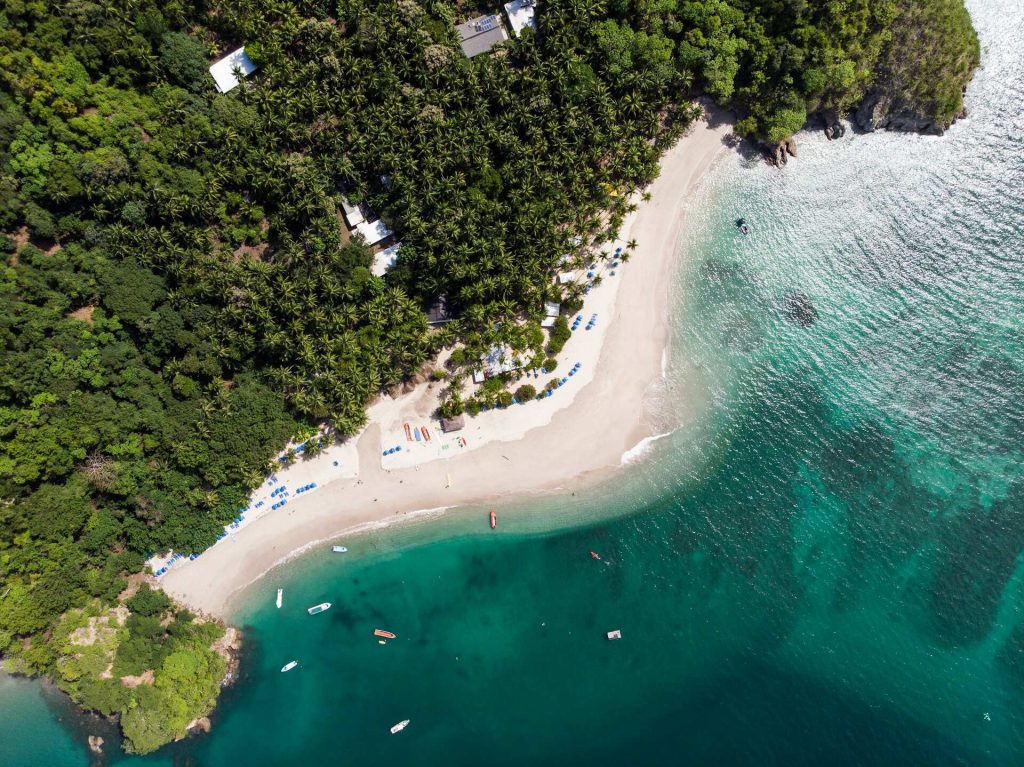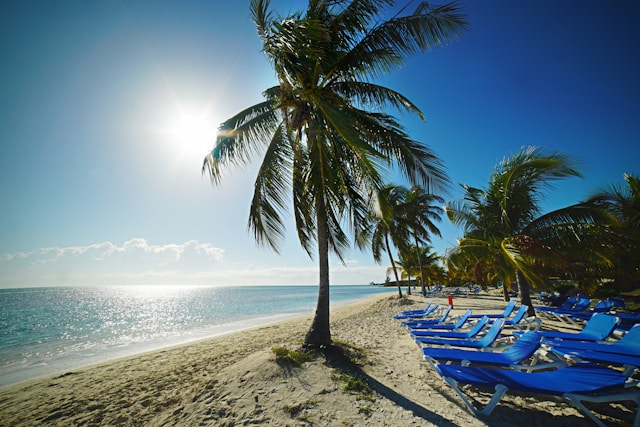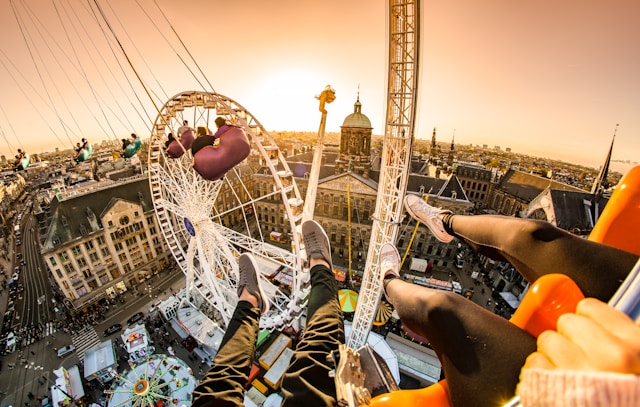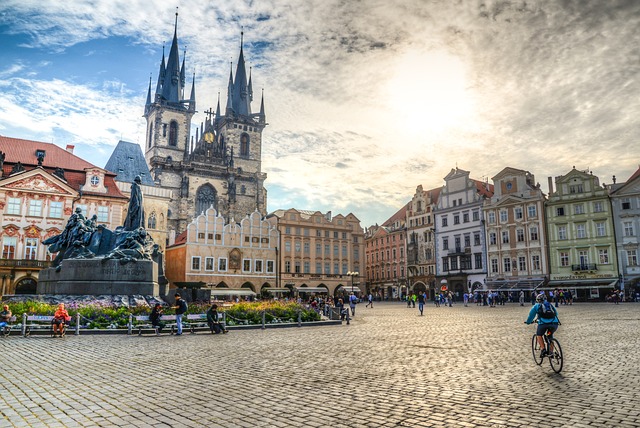India's Golden Triangle Journey
The Golden Triangle of India is a renowned tourist circuit that connects the three major cities of Delhi, Agra, and Jaipur.
This triangular route is celebrated for its rich cultural heritage, magnificent architecture, and vibrant markets.
If you’re planning India’s Golden Triangle journey, here’s everything you need to know to make the most of your trip through the Golden Triangle of India.
What is the India's Golden Triangle?
The term “Golden Triangle of India” refers to the three cities that form a triangular shape on the map: Delhi, Agra, and Jaipur.
This entire route is 720 kilometers long by road, and each city has different cultures and traditions unique to that region of India, making it one of the world’s most popular tourist destinations.
In the following, we’ll talk about the top tourist attractions in each of these three locations, what we’ll need for our trip, and how we should plan.
The Best Time to Visit the Golden Triangle India
The best time to visit the Golden Triangle India is during the cooler months, from October to March.
During this period, the weather is pleasant, making it ideal for sightseeing and outdoor activities.
The temperatures are comfortable, ranging from 10°C to 25°C, allowing you to explore the attractions without the extreme heat of summer or the heavy rains of the monsoon season.
The Golden Triangle India Tourism Highlights
Delhi
Red Fort
The Red Fort, a UNESCO World Heritage site, stands as a symbol of India’s rich history.
Built in the 17th century by Mughal Emperor Shah Jahan, this stunning fort is renowned for its red sandstone architecture.
Visitors can explore its beautiful palaces, audience halls, and the vibrant Chhatta Chowk bazaar.
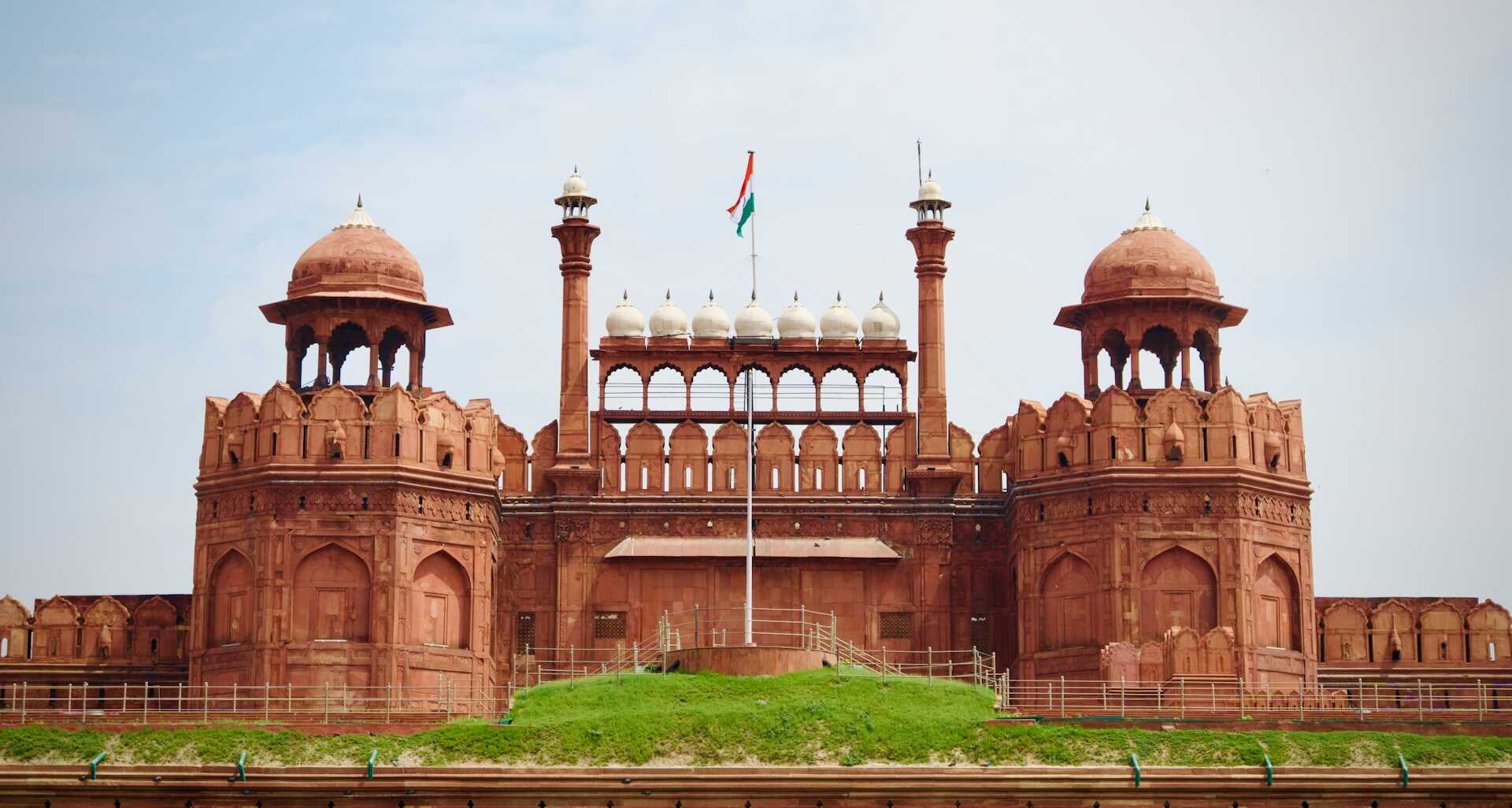
India Gate
Located in the heart of Delhi, India Gate is a war memorial dedicated to Indian soldiers who died in World War I.
This grand archway is surrounded by lush lawns, making it a popular spot for picnics and evening strolls. The Amar Jawan Jyoti flame beneath the arch adds a poignant touch.
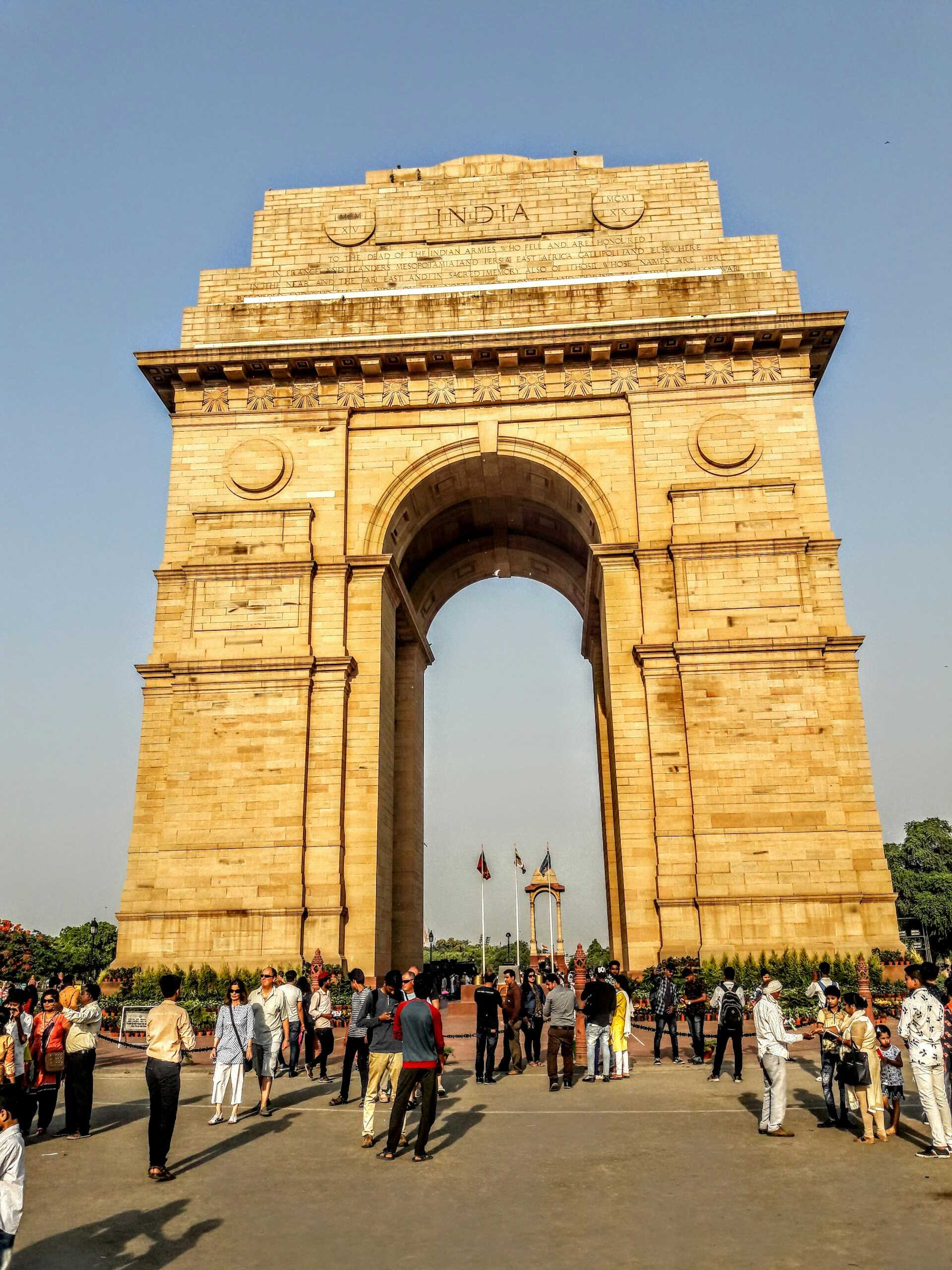
Qutub Minar
Qutub Minar, another UNESCO World Heritage site, is a 12th-century minaret that stands 73 meters tall.
It is the tallest brick minaret in the world. The intricate carvings and inscriptions on the tower, along with the surrounding Qutub Complex and the Iron Pillar, highlight Delhi’s rich history.

Humayun’s Tomb
Humayun’s Tomb, a mid-16th century garden-tomb built for Mughal Emperor Humayun, is a UNESCO World Heritage site.
This stunning example of Mughal architecture features a charbagh (four-quadrant garden) layout and is often considered a precursor to the Taj Mahal.
The grandeur of the tomb makes it a must-visit.
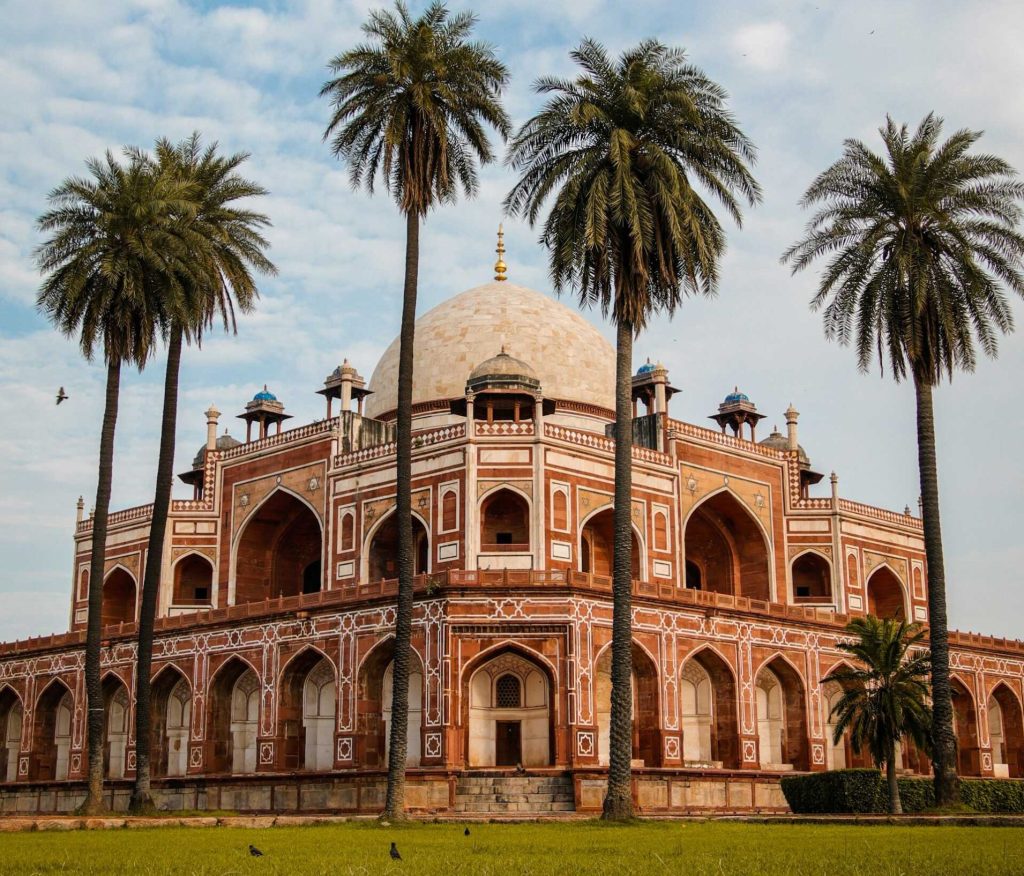
Lotus Temple
The Lotus Temple, also known as the Bahá’í House of Worship, is an architectural marvel shaped like a blooming lotus flower.
This serene temple welcomes people of all faiths to meditate and reflect. Surrounded by nine pools of water, it offers tranquility in the bustling city.
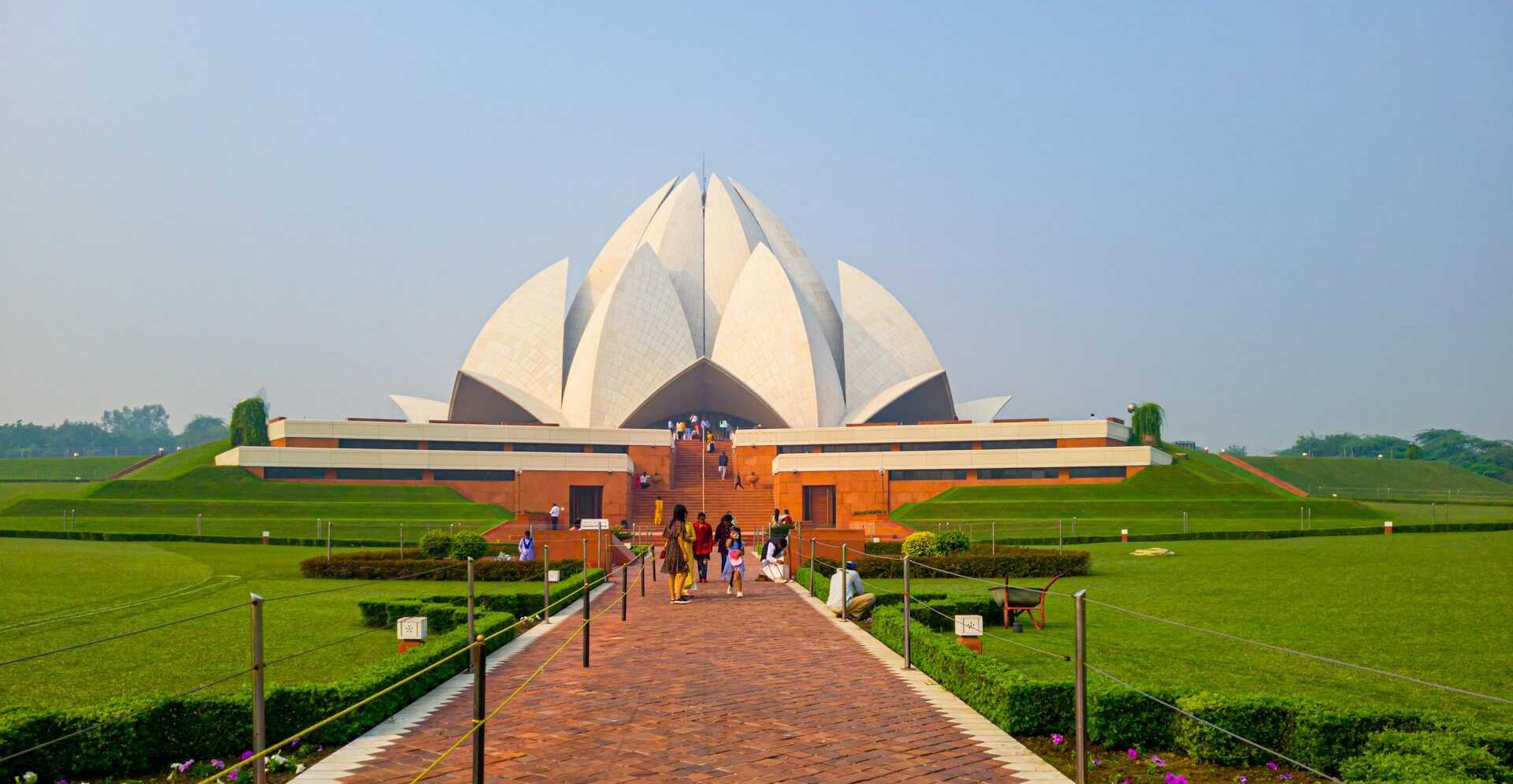
Chandni Chowk
For a true taste of Delhi’s vibrant culture, visit Chandni Chowk.
This historic market, established in the 17th century, offers a sensory overload with its narrow lanes, street food stalls, and shops selling everything from spices to jewelry.
Don’t miss the chance to savor authentic Delhi street food here.
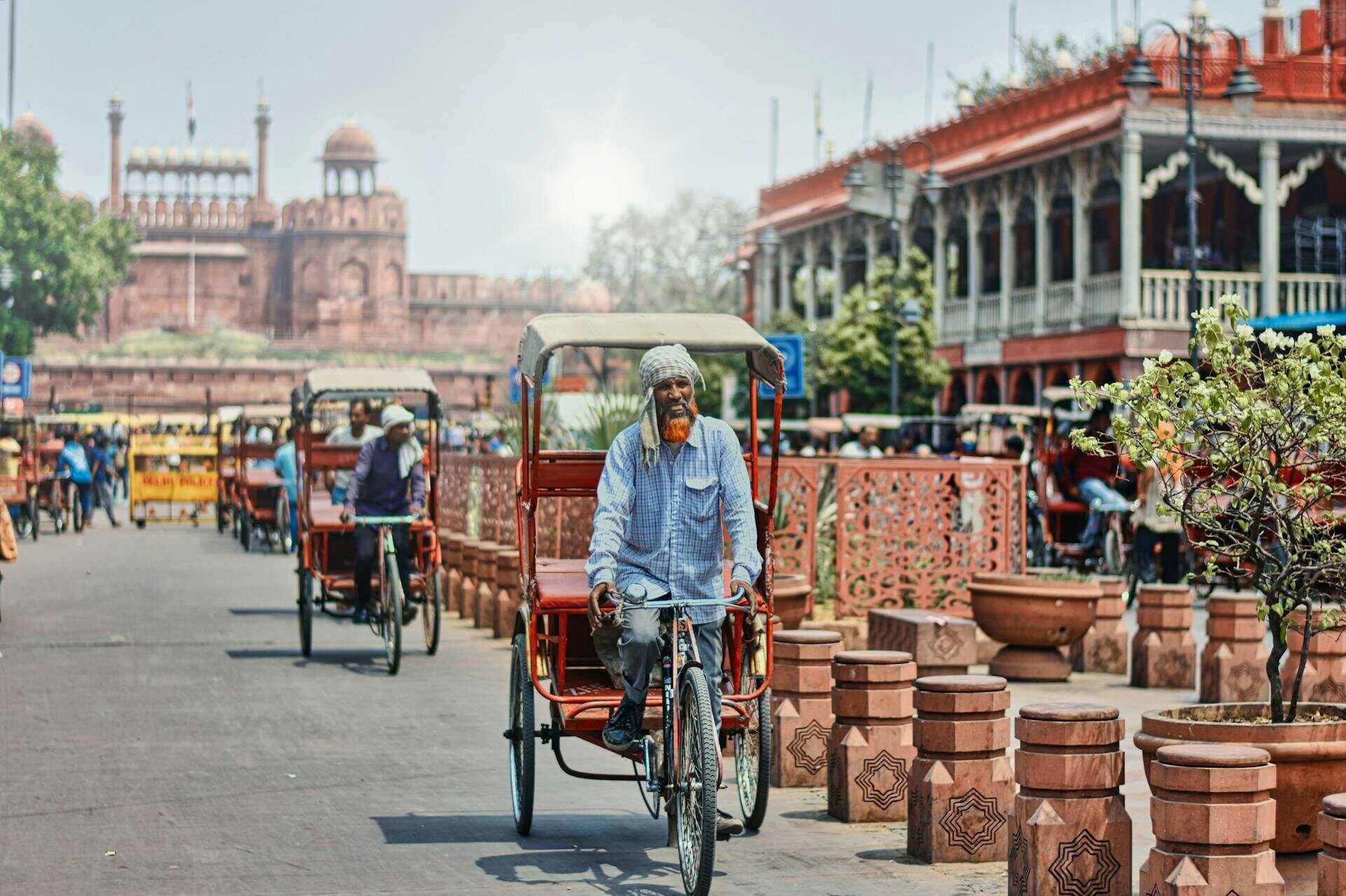
Agra
Taj Mahal
The Taj Mahal, a UNESCO World Heritage site, is one of the New Seven Wonders of the World.
Built by Mughal Emperor Shah Jahan in memory of his wife Mumtaz Mahal, this white marble mausoleum is renowned for its stunning beauty and intricate carvings. Sunrise and sunset are the best times to visit and witness its changing hues.
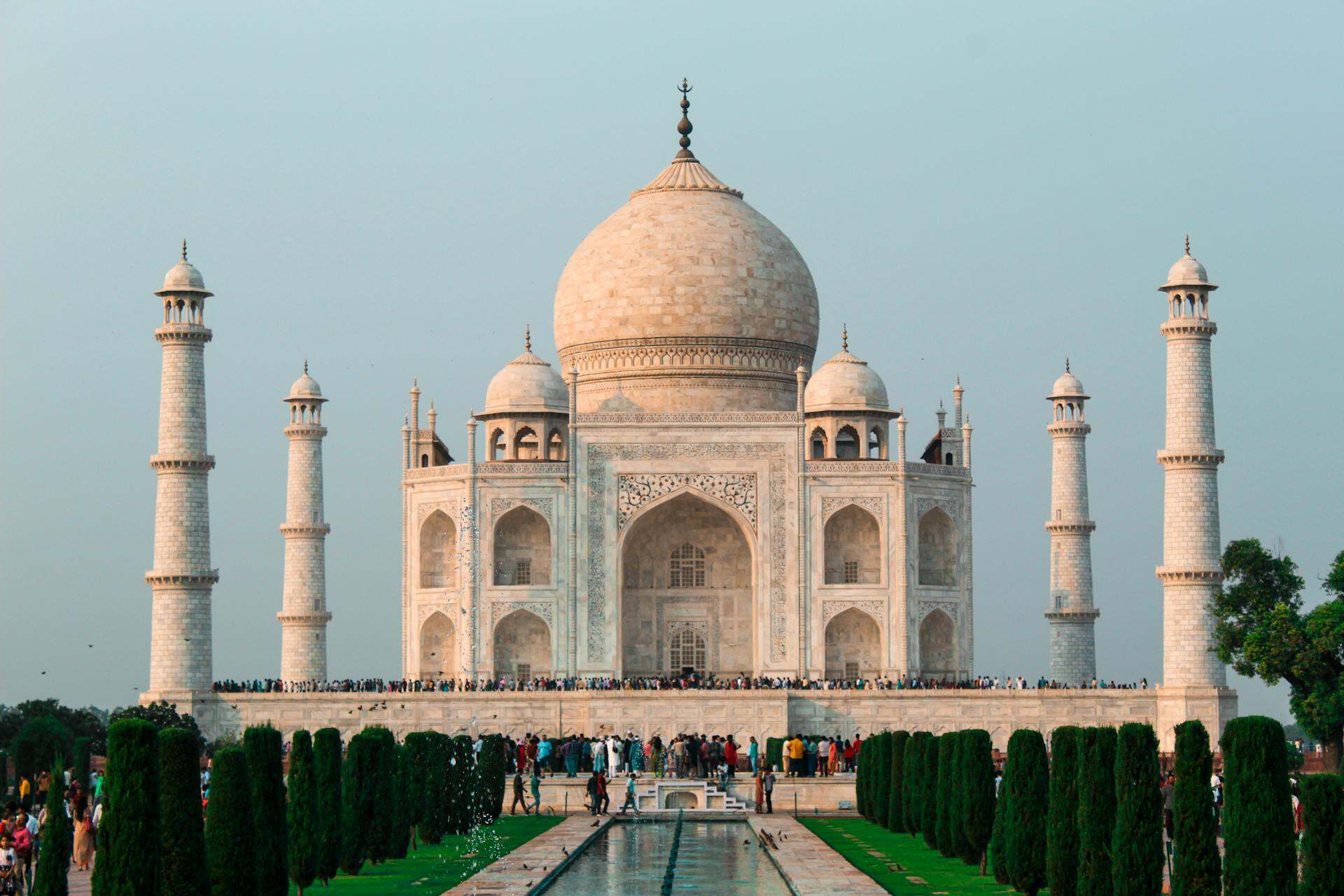
Agra Fort
Agra Fort, another UNESCO World Heritage site, is a massive red sandstone fort that served as the main residence of the Mughal emperors until the capital moved to Delhi.
The fort houses several beautiful palaces, including the Jahangir Palace and the Khas Mahal, as well as audience halls like the Diwan-i-Khas and Diwan-i-Am.
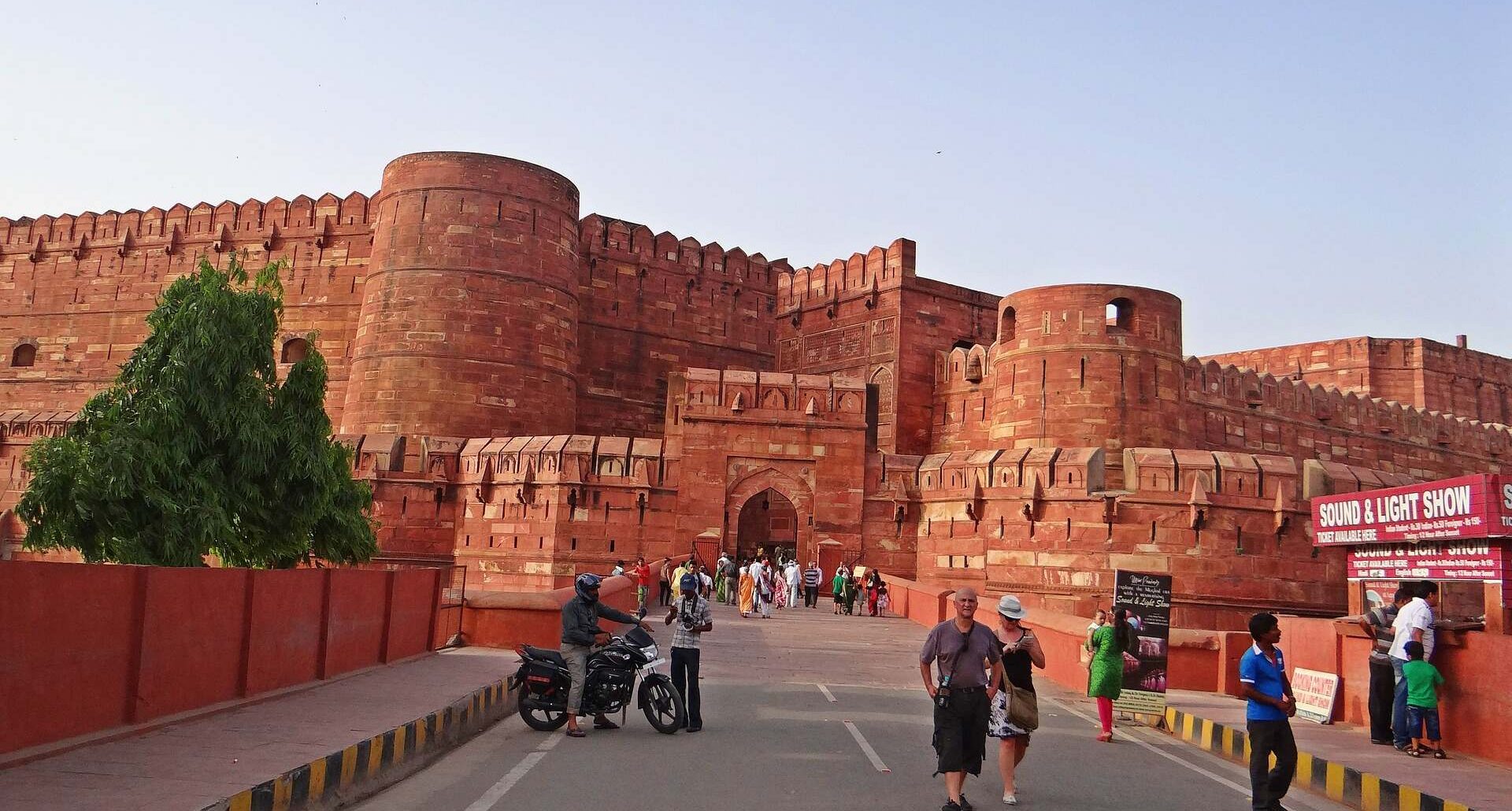
Fatehpur Sikri
Fatehpur Sikri, an ancient city founded by Emperor Akbar, is a UNESCO World Heritage site located just outside Agra.
Known for its well-preserved Mughal architecture, the city includes the stunning Buland Darwaza, the Jama Masjid, and the Tomb of Salim Chishti.
The Panch Mahal, a five-story palace, offers a glimpse into the grandeur of the Mughal era.
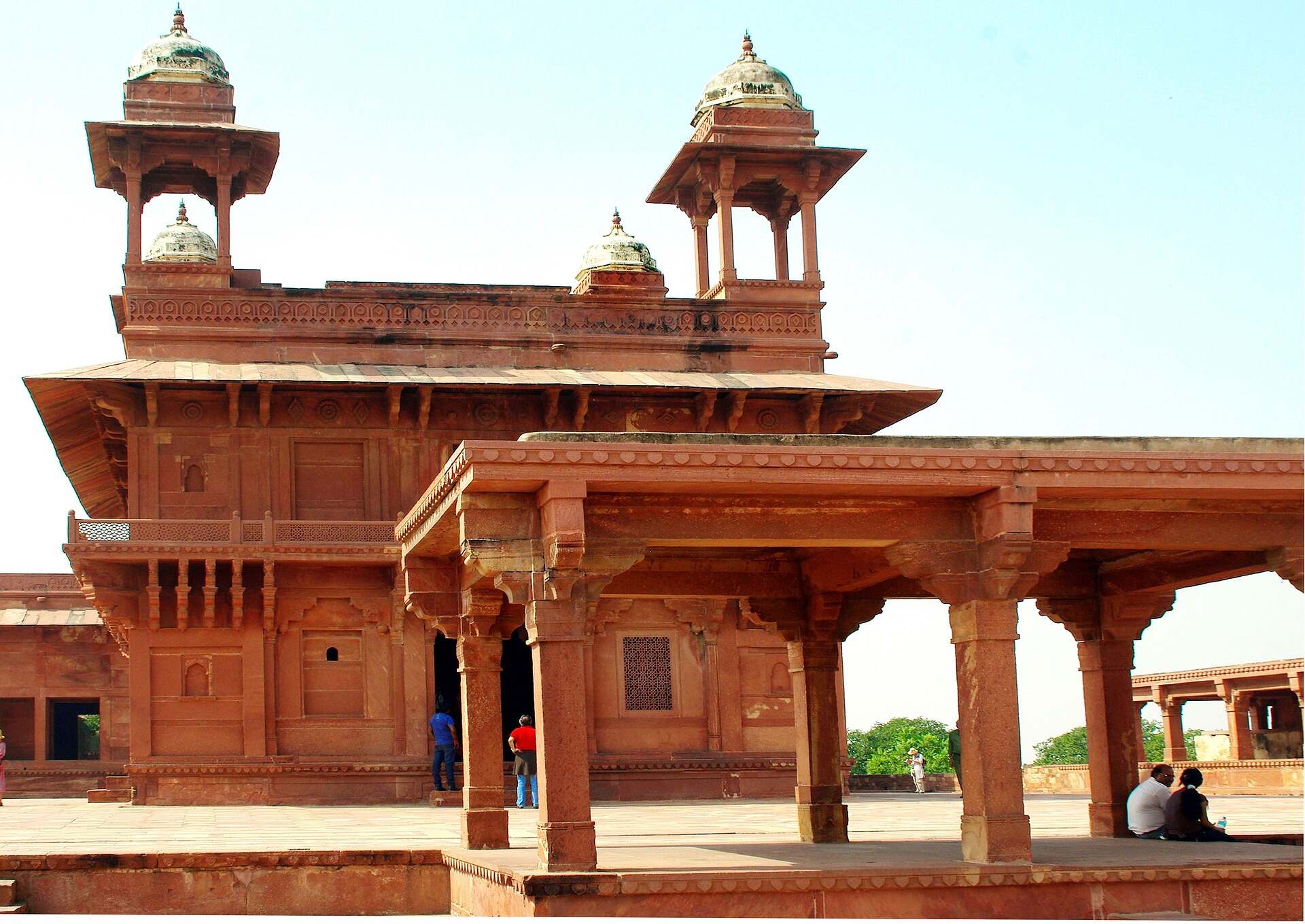
Itmad-ud-Daulah’s Tomb
Often referred to as the “Baby Taj,” Itmad-ud-Daulah’s Tomb is a beautiful marble mausoleum and a precursor to the Taj Mahal.
Built by Empress Nur Jahan for her father, the tomb features intricate marble inlay work and is set in a charming garden. Its delicate beauty makes it a must-visit.
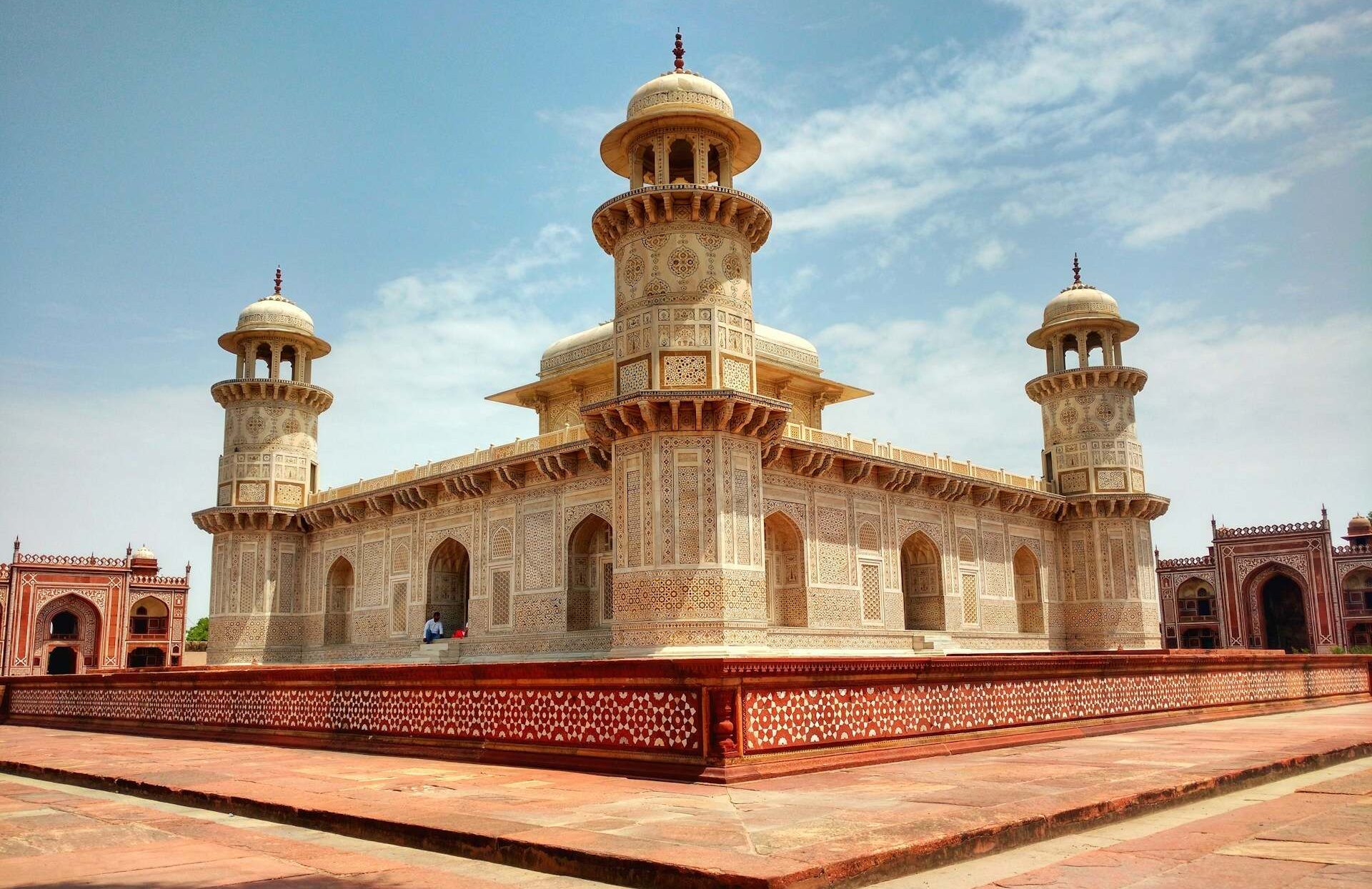
Mehtab Bagh
Mehtab Bagh, a lush garden complex located across the Yamuna River from the Taj Mahal, offers a perfect view of the monument, especially at sunset.
This garden, part of the original Mughal garden complex, is a serene place to relax and enjoy the majestic view of the Taj Mahal without the crowds.
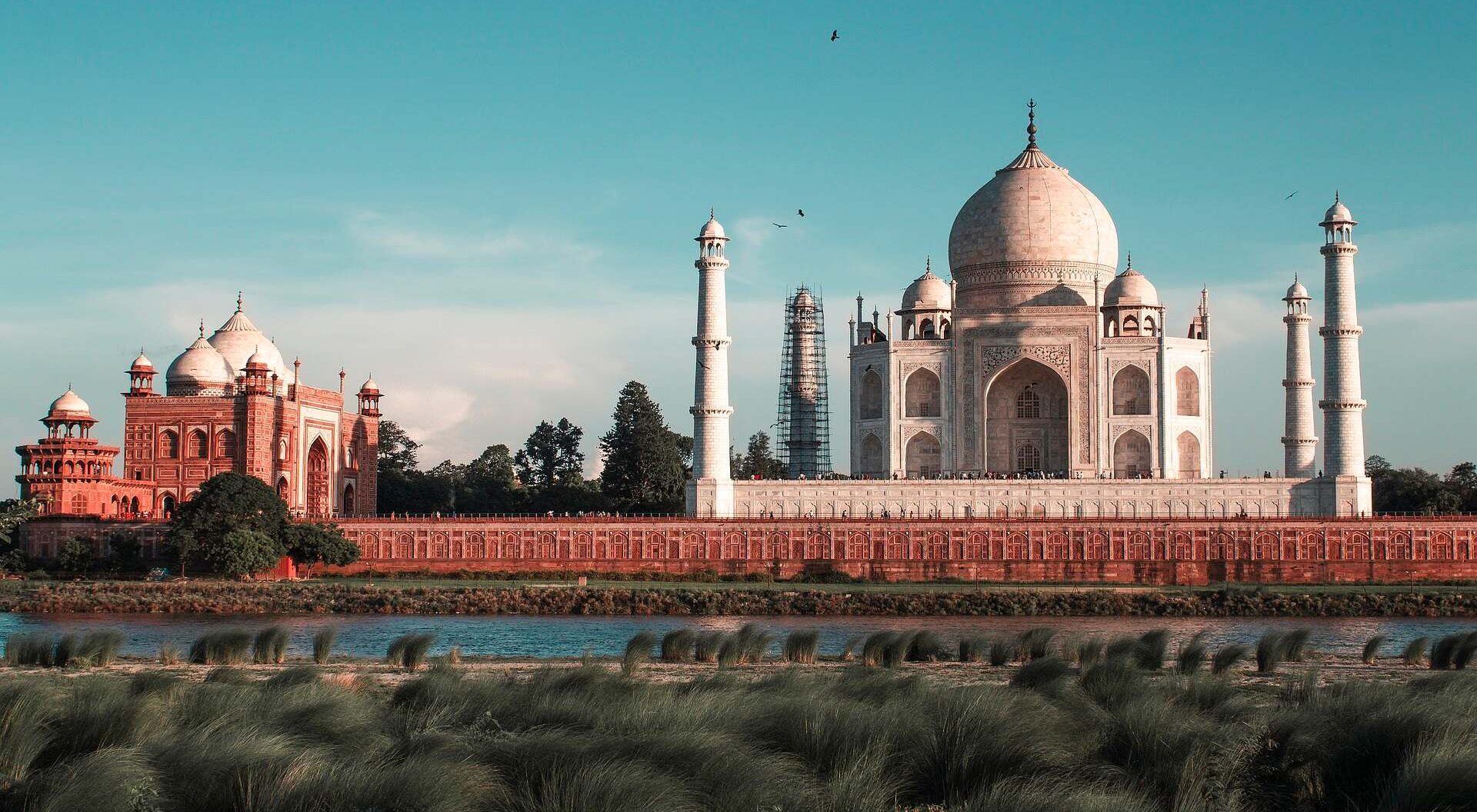
Akbar’s Tomb
Akbar’s Tomb, located in Sikandra, is the final resting place of the great Mughal Emperor Akbar.
The mausoleum is an architectural marvel, combining Hindu, Christian, Islamic, Buddhist, and Jain motifs, reflecting Akbar’s secular outlook.
The surrounding gardens and wildlife add to the peaceful atmosphere of this historical site.
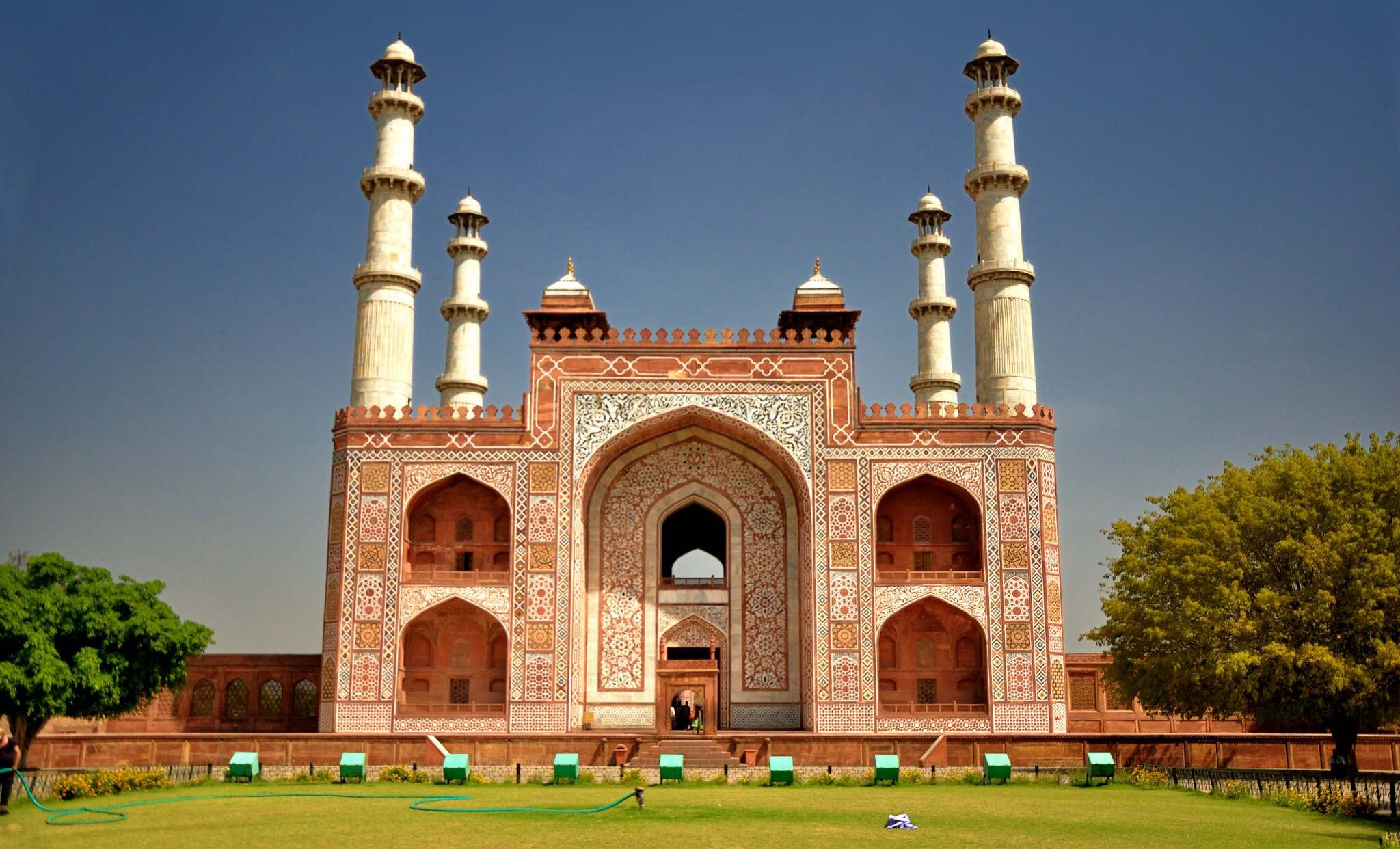
Jaipur
Amber Fort
Amber Fort, located on a hilltop overlooking Maota Lake, is a majestic palace that combines Hindu and Mughal architectural styles.
Built in the 16th century by Raja Man Singh, the fort features stunning courtyards, palaces, halls, and gardens.
Don’t miss the Sheesh Mahal (Mirror Palace), renowned for its intricate mirror work.
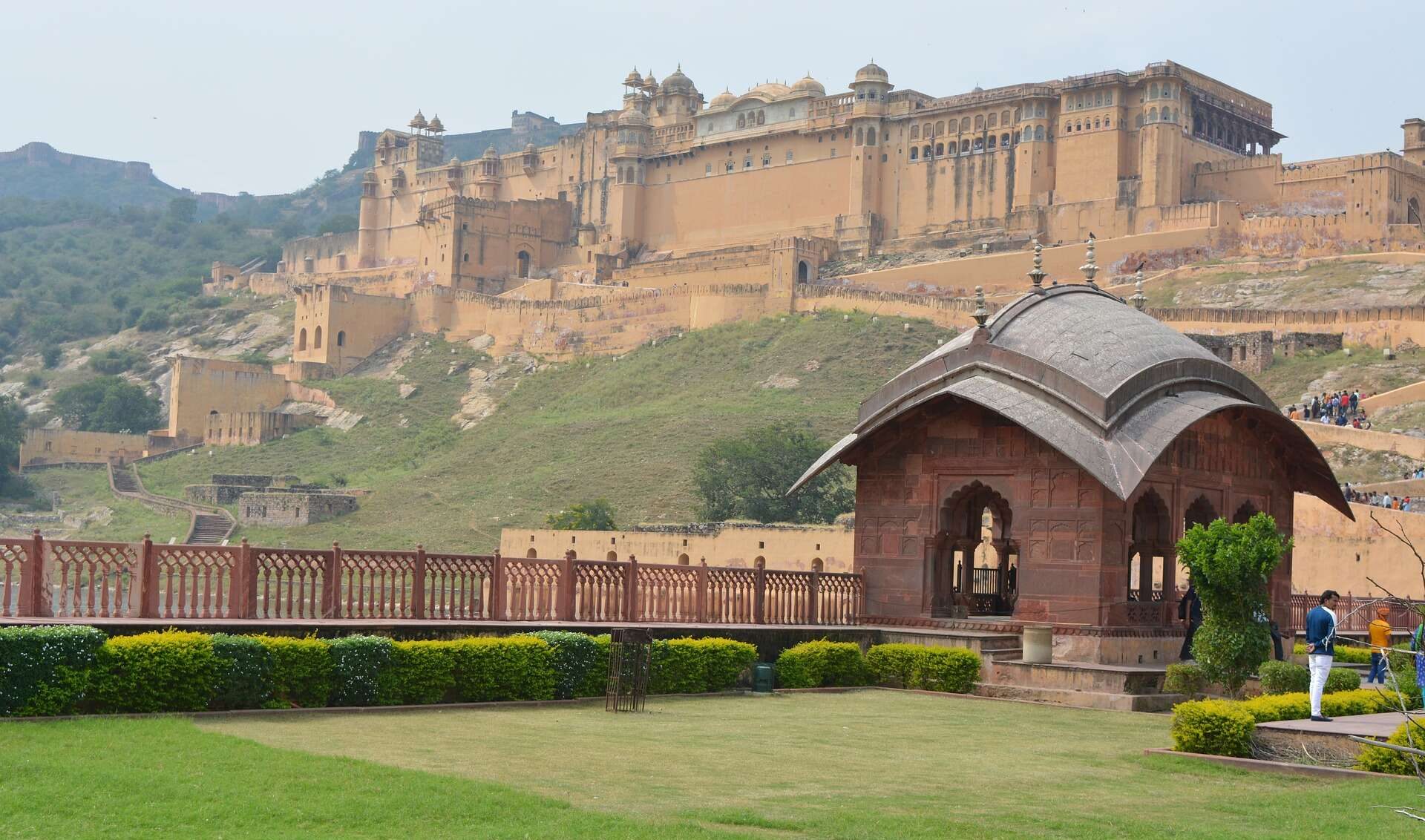
City Palace
The City Palace, located in the heart of Jaipur, is a beautiful complex of courtyards, gardens, and buildings.
Constructed by Maharaja Sawai Jai Singh II, the palace blends Rajput, Mughal, and European architectural styles.
Key attractions within the palace include the Chandra Mahal, Mubarak Mahal, and the museum showcasing royal artifacts.
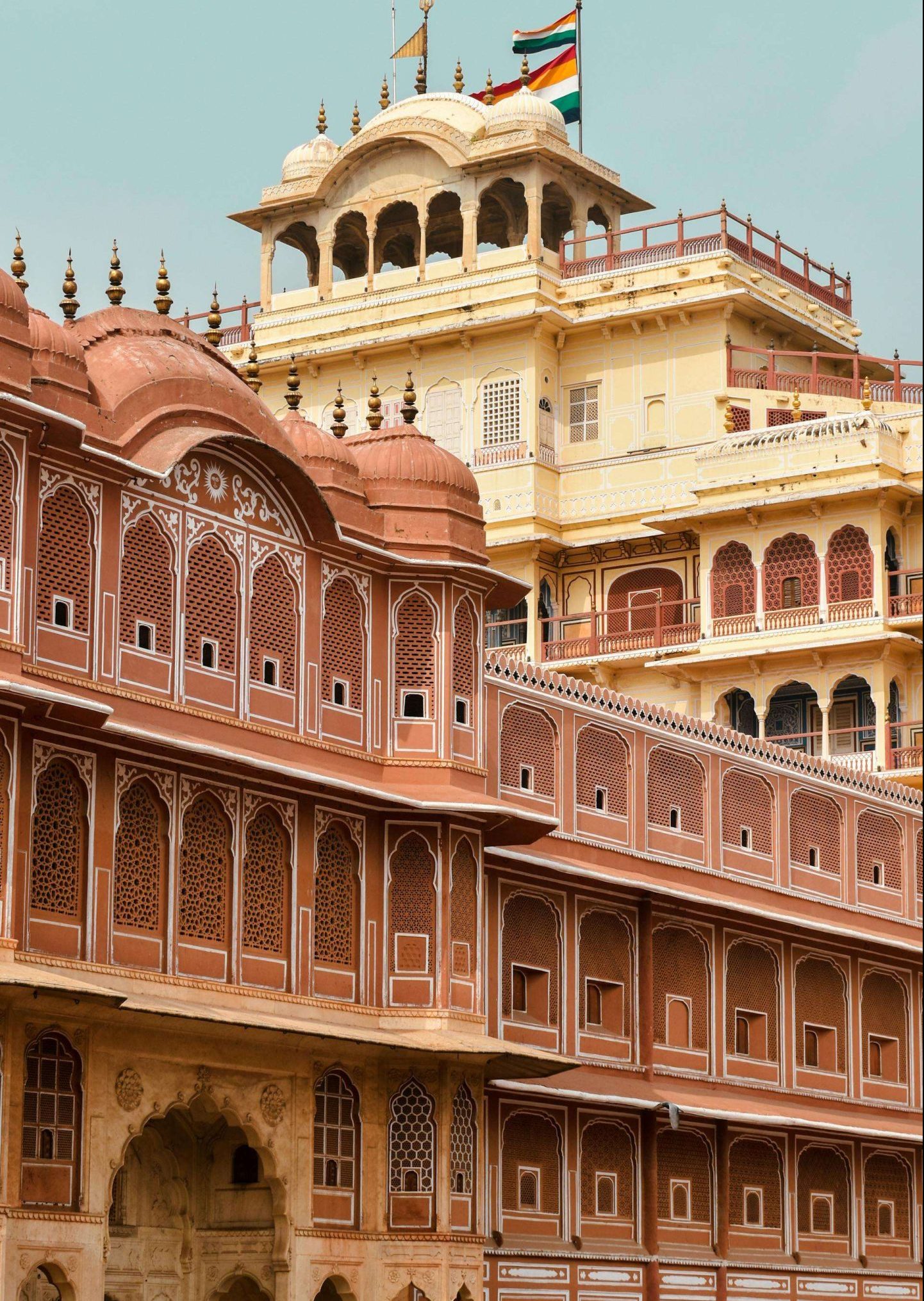
Hawa Mahal
Hawa Mahal, also known as the Palace of Winds, is an iconic five-story pink sandstone structure.
Built in 1799 by Maharaja Sawai Pratap Singh, the palace features 953 small windows (jharokhas) that allow cool breezes to flow through, making it a perfect summer retreat.
The unique honeycomb design offers stunning views of the city.

Jantar Mantar
Jantar Mantar, a UNESCO World Heritage site, is an astronomical observatory built by Maharaja Sawai Jai Singh II in the 18th century.
It houses the world’s largest stone sundial and various other instruments used for measuring time, tracking celestial bodies, and observing planetary movements.
This site is a testament to the scientific advancements of ancient India.
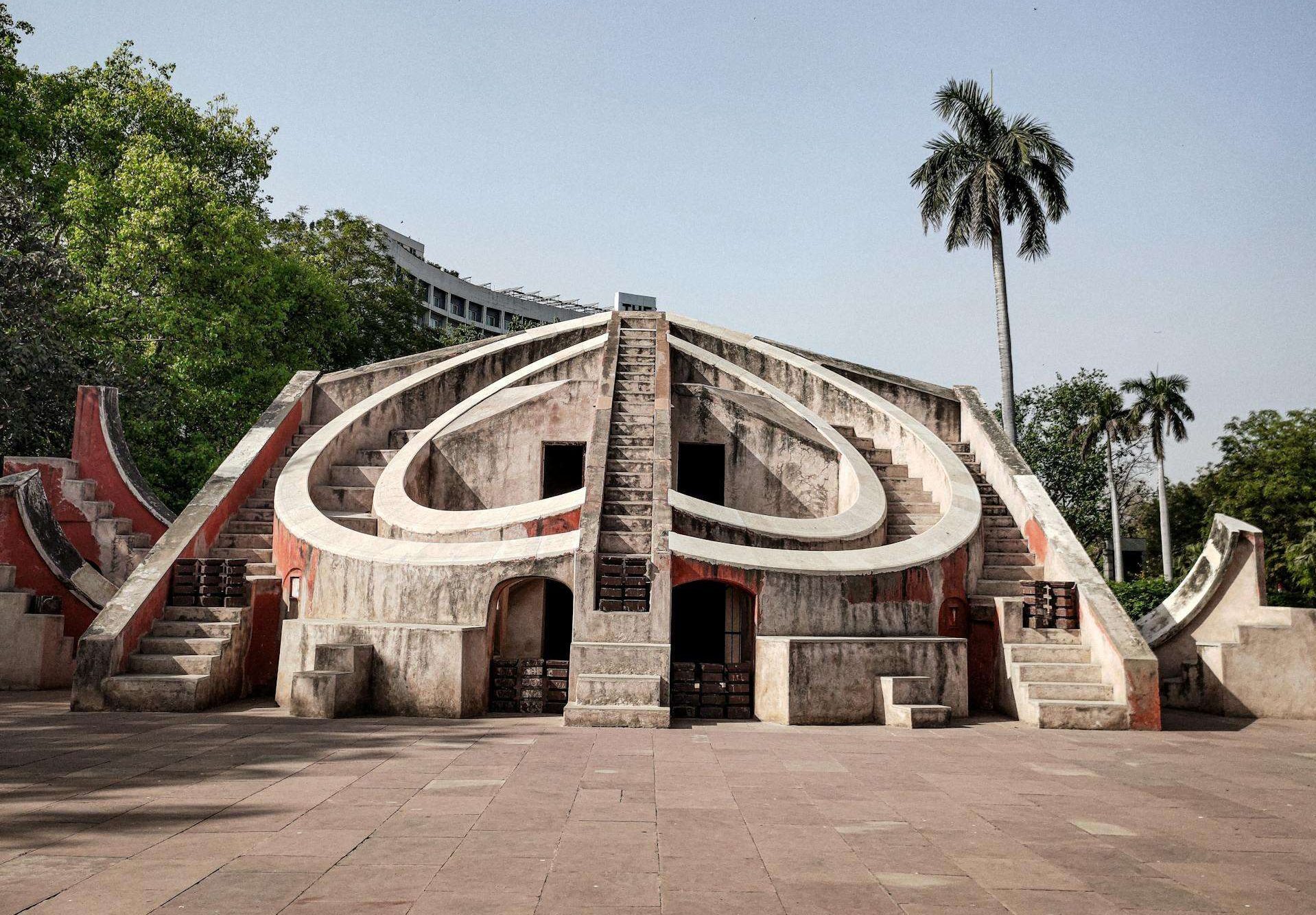
Nahargarh Fort
Nahargarh Fort, perched on the Aravalli Hills, offers a breathtaking view of Jaipur.
Originally built in 1734 by Maharaja Sawai Jai Singh II, the fort served as a retreat for the royal family.
The fort’s architecture, combined with its scenic surroundings, makes it a popular spot for visitors. Sunset views from the fort are particularly spectacular.

Jal Mahal
Jal Mahal, or the Water Palace, is a beautiful palace situated in the middle of Man Sagar Lake.
This architectural marvel features a blend of Rajput and Mughal styles.
While the palace itself is not open to the public, visitors can enjoy its stunning views from the lakeshore, especially during sunrise and sunset.
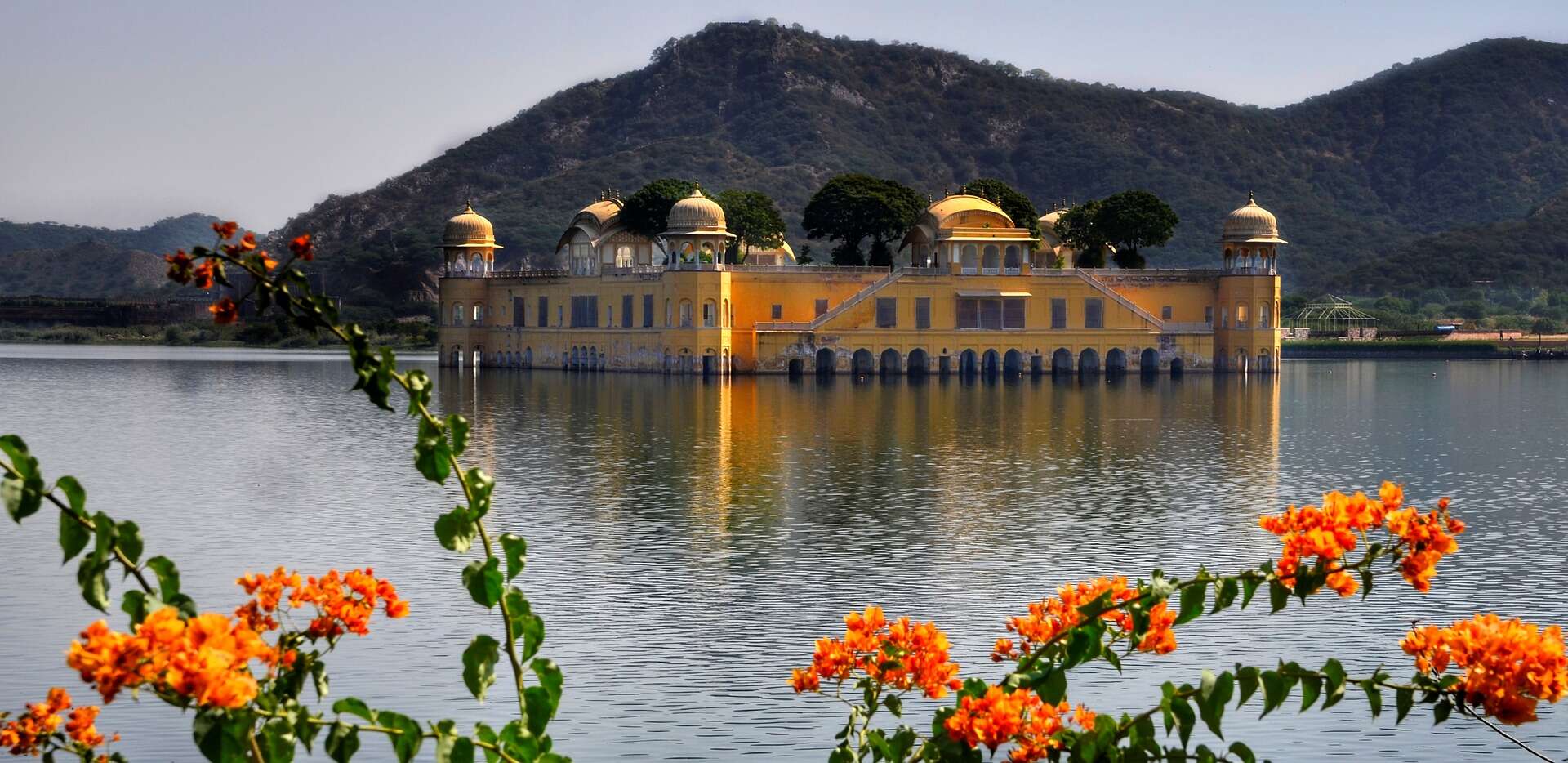
How to Plan a Golden Triangle Tour
Planning a tour of India’s Golden Triangle, which includes Delhi, Agra, and Jaipur, involves several key steps to ensure a memorable experience.
Follow this guide to make the most of your journey.
1. Itinerary
Allocate at least 6-7 days to cover the major attractions in each city.
Start your journey in Delhi, proceed to Agra, and then move on to Jaipur.
This sequence allows you to experience a seamless flow of historical and cultural sites.
2. Transport
You can rent a car with or without a driver for more convenience, but you can also travel between cities by train or airline.
You can also use street autorickshaws in city traffic, which can be a unique and enjoyable experience.
Each of these strategies has unique benefits that you can take advantage of.
3. Accommodation
Book your stay in advance, especially during peak tourist seasons.
Each city offers a range of accommodations, from luxury hotels to budget-friendly options.
Research and choose accommodations that fit your budget and preferences.
4. Guided Tours
Opt for guided tours to gain deeper insights into the historical and cultural significance of each site.
Knowledgeable guides can enhance your experience with detailed stories and facts that you might miss on your own.
5. Local Cuisine
Don’t miss the chance to savor local delicacies in each city.
From Delhi’s street food to Agra’s petha sweets and Jaipur’s traditional Rajasthani thali, each destination offers unique culinary delights.
Delhi Cuisine
In Delhi, savor the diverse flavors of street food, including chaat, parathas, kebabs, and butter chicken.
Chandni Chowk is a must-visit for food enthusiasts looking to indulge in authentic Delhi cuisine.
Agra Cuisine
In Agra, try the famous petha, a sweet delicacy made from ash gourd.
Additionally, enjoy Mughlai cuisine, featuring dishes like biryani, kebabs, and korma, which reflect the city’s rich culinary heritage.
Jaipur Cuisine
In Jaipur, experience the traditional Rajasthani thali, which includes a variety of dishes such as dal baati churma, gatte ki sabzi, and ker sangri.
The vibrant flavors and unique preparations are a highlight of Jaipur’s culinary scene.
Conclusion
Planning India‘s Golden Triangle journey can be a great excuse to learn more about the history and culture of Delhi, Agra, and Jaipur.
When planning your travels, keep in mind the mode of transportation you will take and where you will stay.
Local and street-delicious foods, the use of autorickshaws for transportation, and walking around the streets and marketplaces can all have a significant impact on your enjoyment of this trip.
Whether you are a first-time or seasoned traveler, this trip may be both challenging and rewarding.
Definitely, planning India’s Golden Triangle journey will be one of your best recollections and most memorable experiences.


